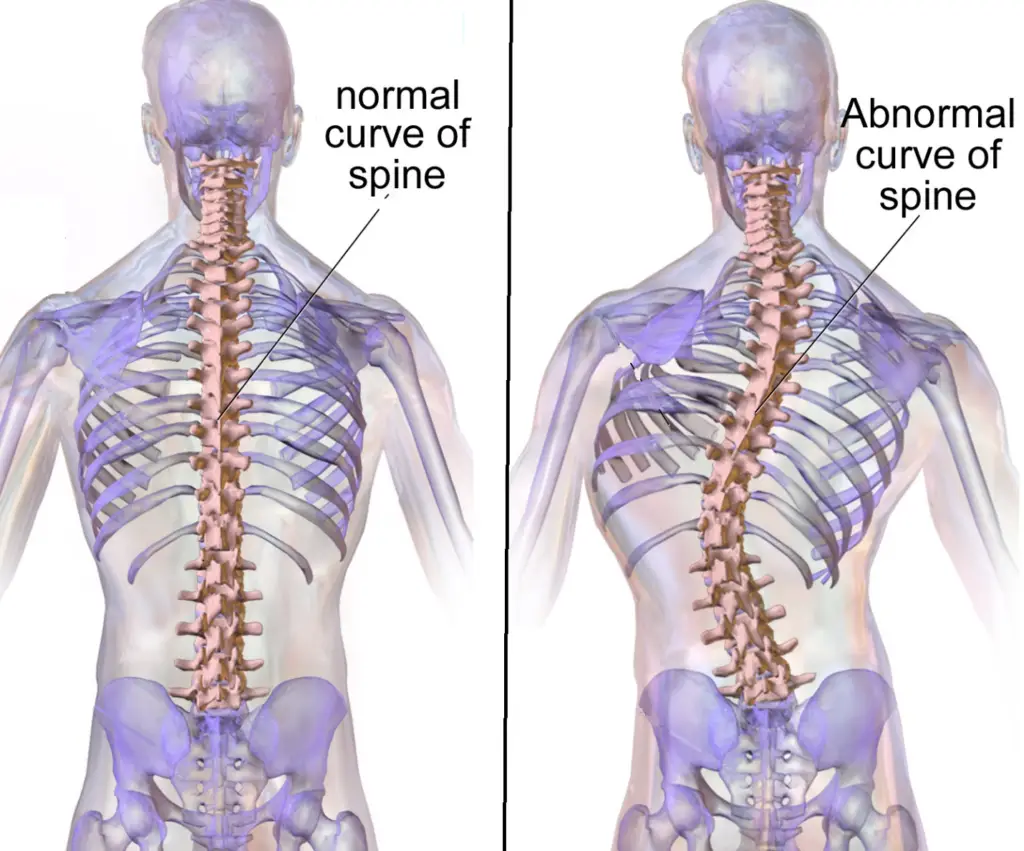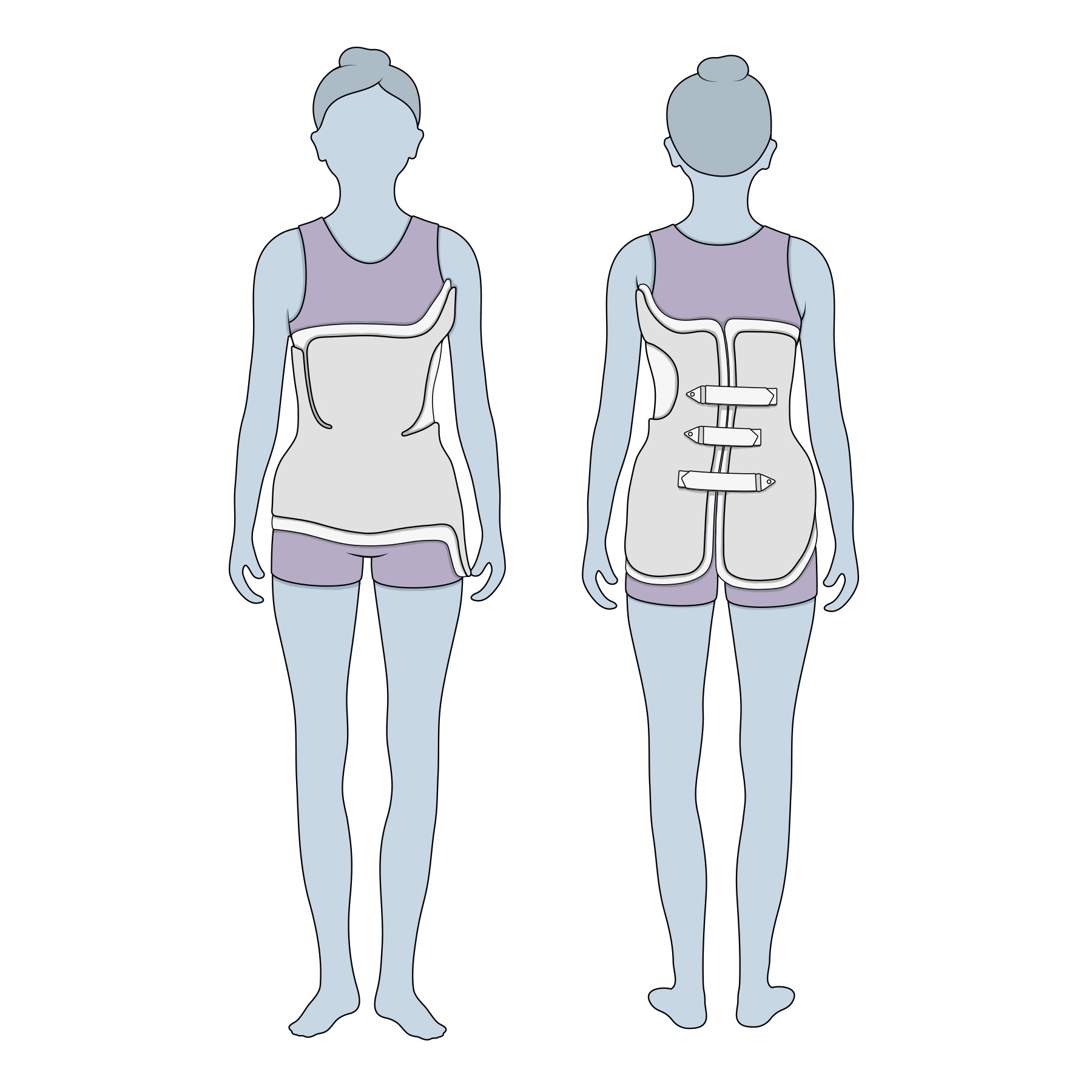Table of Contents
Scoliosis is a spine disorder characterized by an abnormal curve of the vertebral column, which can cause pain and mobility issues. Sometimes, a scoliosis brace may be recommended as part of treatment to help reduce the curvature. However, many patients wonder if their insurance policy will cover the cost of these braces, so let’s take a closer look at what types of coverage are available for those with scoliosis.
Several braces may be used to treat scoliosis in children and adults. These include Milwaukee Brace, Charleston Bending Brace, Boston Overlap Brace, and Providence Nighttime Brace. The chosen type depends on the severity and type of scoliosis and will vary from patient to patient. As such, you must consult your physician or orthopedic specialist for guidance on which brace is most appropriate for your particular situation.
When Children Use Scoliosis Brace?
Scoliosis is a medical condition in which the spine curves to one side, resulting in a C—or S-shaped curve. In some cases, scoliosis can progress to the point where it causes discomfort, pain, and other complications. In these cases, a scoliosis brace may be recommended as a treatment option.

A scoliosis brace or Thoracic Lumbar Sacral Orthosis (TLSO) is a device worn around the torso to help correct the curvature of the spine. It applies pressure to the spine in certain areas to prevent the curve from worsening. Scoliosis braces are typically used in children and adolescents who are still growing and whose spines are not yet fully formed.

A doctor or orthopedic specialist who has evaluated the severity of scoliosis and determined that the amount is an appropriate treatment option typically decides to use a scoliosis brace. Scoliosis braces are normally recommended for children and adolescents with curves between 25 and 40 degrees. However, this can vary depending on the child’s age, the curve’s location, and other factors.
It is important to note that scoliosis braces are not a cure for scoliosis but rather a way to prevent the curve from worsening. Surgery may be necessary in some cases to correct severe cases of scoliosis.
Does Insurance Cover a Scoliosis Brace?
Yes, all major insurances cover a scoliosis brace for moderate scoliosis, 25 to 50 degrees, or a rapidly progressing curve. On average, you will need to pay $270 out-of-pocket for an 80/20 typical coinsurance plan if you want to spend $1350 on a scoliosis brace.
A scoliosis brace costs between $199 (cheap Amazon solution) and $21 000 (most expensive). However, our research shows that our research shows that the typical price for a scoliosis brace is around $1350. Usually, we talk about medical quality TLSO braces (thoracic lumbar sacral orthosis).
Your doctor will provide you with L codes for your problem in the following way:
- L 1200 code: Scoliosis – Thoracic-Lumbar Sacral (Low Profile TLSO) – initial orthosis can only cost up to $1300 to $1800.
- L1210 code: lateral thoracic extension additional $200.00
- L1240 code: Lumbar derotation pad additional $70
- L 1260 code: Anterior thoracic derotation pad additional $70
- L 1290 code : Lateral trocanteric pad additional $65
- L1300 code: body jacket other $1350
When you analyze the cost of a Scoliosis brace, you need to explore additional parts. For example, Codes L1290 and L1210 mean one needs decompensation and other pads.
Regarding insurance coverage for scoliosis braces, many policies provide some form of reimbursement or payment assistance. However, this coverage varies significantly depending on the type and level of your plan and the provider you are using. Generally speaking, most plans will cover at least some portion of the cost associated with a prescribed brace; however, you should always check with your insurance company before purchasing one to ensure that you understand exactly what kind (if any) coverage is included in your policy.
Most importantly, please note that while many insurance plans provide some form of reimbursement for scoliosis braces, they may not cover all associated costs; therefore, confirming exact payment amounts before making any purchases or decisions about treatment options is essential. Additionally, certain items, such as custom fittings ma, may not always be covered by traditional health insurance plans; in these cases, it is essential to find out if these forms of financial assistance are available through non-profit organizations or other avenues to minimize out-of-pocket expenses associated with obtaining a brace.
When Do You Need a Back Brace for Scoliosis?
Scoliosis is a medical condition characterized by an abnormal curvature of the spine. It can range from mild to severe and is typically measured using Cobb’s angle, which measures the degree of curvature. Depending on the extent of the curvature, different types of treatment may be necessary to control or manage scoliosis. A back brace is one of the most common treatments for moderate scoliosis. But when do you need a back brace for scoliosis?
Generally speaking, if your doctor suspects that your curves are at least 25 degrees or more or if your curve is rapidly progressing (getting worse), you may require a support device such as a back brace. On the other hand, milder cases of scoliosis (less than 10-25 degrees) often don’t require immediate intervention. They can, instead, be monitored closely by your physician to ensure that it doesn’t get worse.
The goal of using a back brace for scoliosis isn’t necessarily to correct the curvature in the spine but to stop its progression and prevent further complications. For example, a custom-fitted thoracic, lumbar sacral orthosis (TLSO) brace fits snugly around your torso like an ordinary corset. It helps prevent further spine curving while supporting weakened muscles in the affected area. Most people who wear these braces find them comfortable enough to wear daily under their clothes. They typically wear them until their spinal curves have stopped increasing in size or they reach skeletal maturity (when growth plates close).
In rare cases where scoliosis is considered severe—with curvatures more significant than 50 degrees—surgery may be needed instead of or in addition to wearing a back brace. Severe cases require surgical management with spinal fusion procedures that help correct misaligned bones by joining them together, making them less likely to move out of place as time progresses. Without surgical treatment, patients will not improve, and their curves may worsen over time without any intervention.
Whether or not you need a back brace for scoliosis depends on several factors, including how severe your curve is and how rapidly it’s progressing. After assessing your situation and considering any other underlying health problems you might have now, your doctor can give you advice customized specifically for you.
Conclusion
Many health insurance policies provide some degree of coverage for scoliosis braces; however, exact amounts and services can vary greatly depending on individual circumstances,ces such as plan type and provider network used. Therefore, patients must have an open dialogue with their healthcare providers before making any purchase decisions to understand what coverage options are available through their existing policies and how they might best use them when seeking treatment-related costs such as bracing options.
